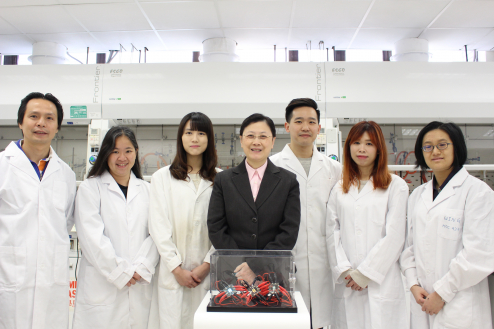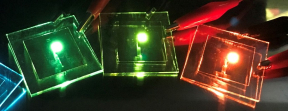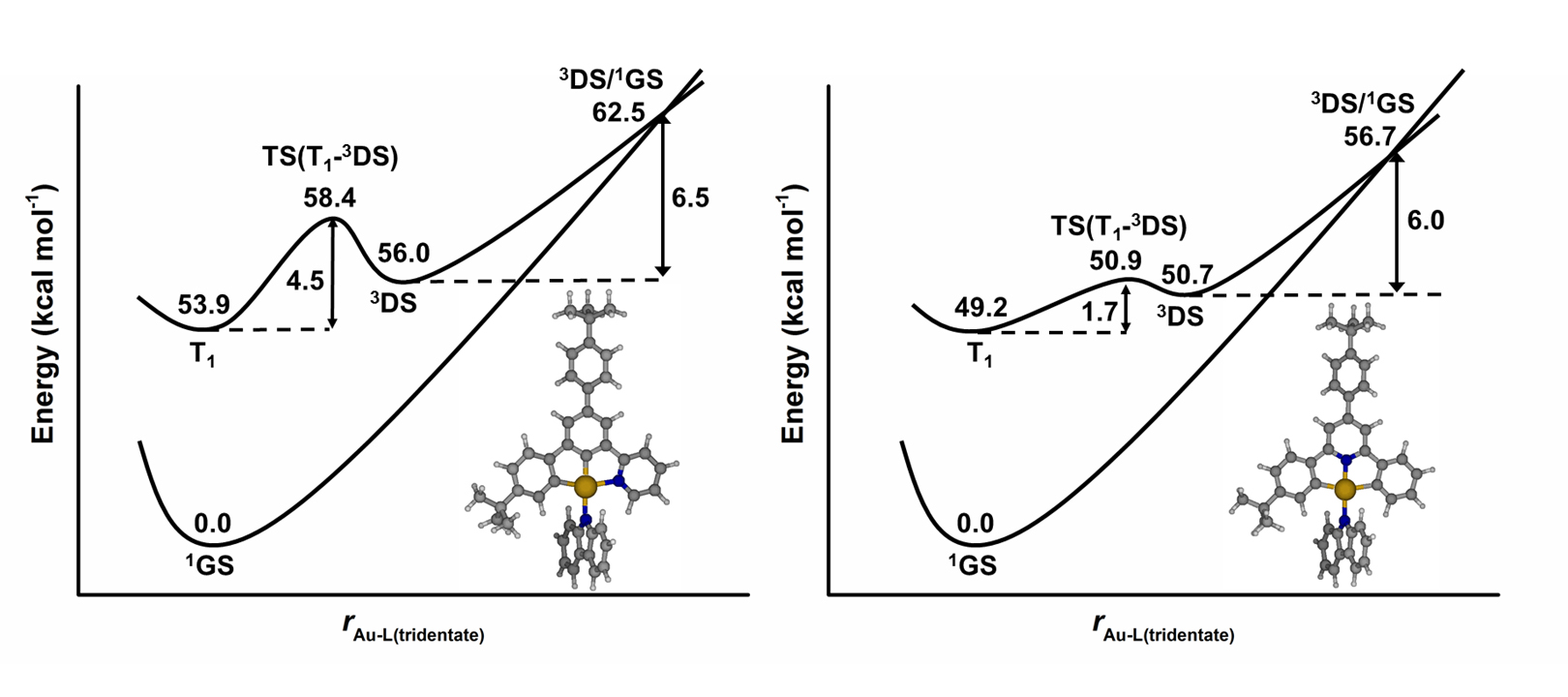研究故事
VP(R)'s Picks: A Gold Standard for Display Technology
上一頁
The technology behind bendable screens depends on organic light-emitting diodes (OLEDs). Iridium-based OLEDs are currently favoured, but these are expensive, so the search has been on for new classes of OLEDs. Professor Vivian Yam Wing-Wah recently showed that gold-based OLEDs are a cheaper, less toxic and equally effective alternative.
OLED technology has enabled the ultra-light, paper-thin displays that make bendable electronic gadgets possible, and it is the only technology able to produce a thin sheet of pure white light for solid-state lighting. But the iridium-based OLED technology that is the current standard is based on one of the scarcest elements on Earth. Researchers have therefore been trying to identify new classes of efficient and cost-effective emitters for OLEDs.
HKU scholars led by Professor Yam of the Department of Chemistry recently reported on their success in using gold as an alternative OLED. Gold is more abundant than iridium and platinum (another metal with OLED potential), making it cheaper to source, and it is less toxic and less damaging to the environment. Professor Yam and her team showed it also has comparable properties to the other two metals.

They generated a new class of small-molecule and thermally evaporable gold(III) complexes that have similar properties to iridium and platinum, including tuneable emission colours ranging from sky-blue to red (OLEDs have a full colour gamut of an astounding 16.78 million colours). The gold(III) complexes also exhibited thermal stability after the team was able to identify the right balance for the ligand co-ordination environment and demonstrated a long device lifetime of up to 83,000 hours.
The discovery has the potential to provide a new avenue for producing OLED emitters and overturning monopolies in the market, which currently are based on the iridium system.
Professor Yam, who is Philip Wong Wilson Wong Professor in Chemistry and Energy, was selected in 2018 as one of the Ten Science Stars of East Asia by Nature. She has led a number of major research projects, such as a Theme-based Research Scheme project and an Area of Excellence Project. She is also Director of the HKU-TCL Joint Laboratory for New Printable OLED Materials and Technology, which was co-funded by TCL Corp Ltd and HKU on the strength of HKU's earlier work on solution-processable gold(III) phosphorescent materials.

Related paper: Li L.K., Tang M.C., Lai S.L., Ng M., Kwok W.K., Chan M.Y. and Yam V.W.W., “Strategies towards rational design of gold(III) complexes for high-performance organic light-emitting devices”, Nature Photonics, 2019, 13, 185-191.




